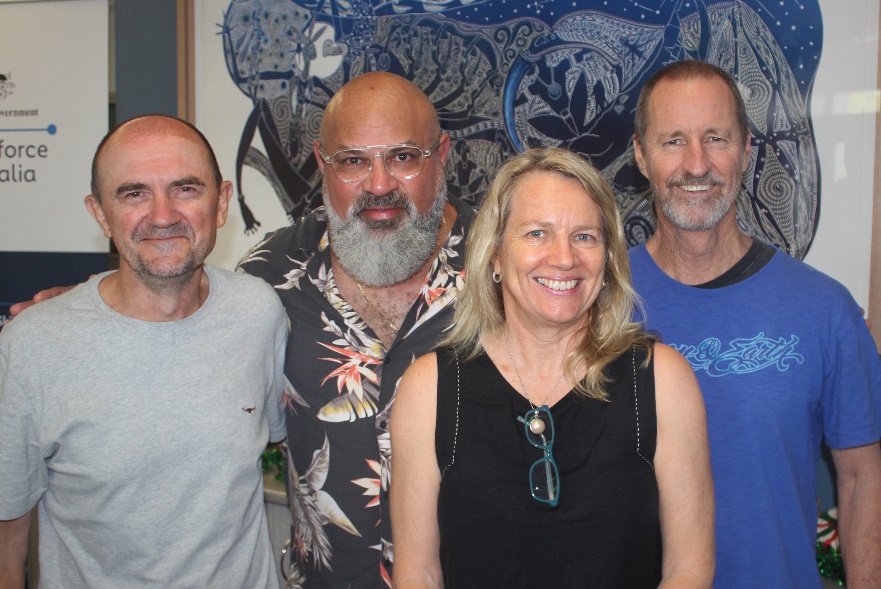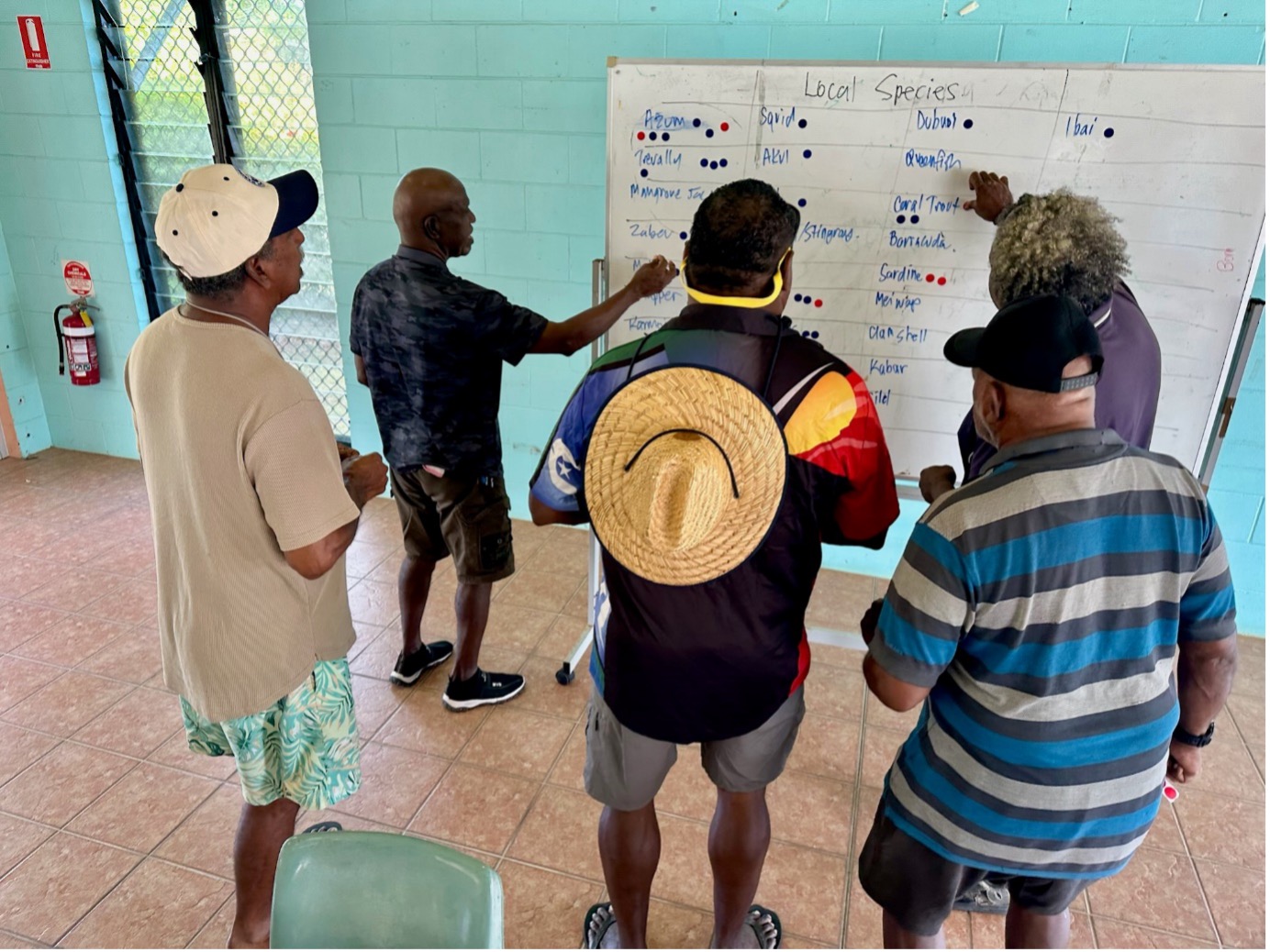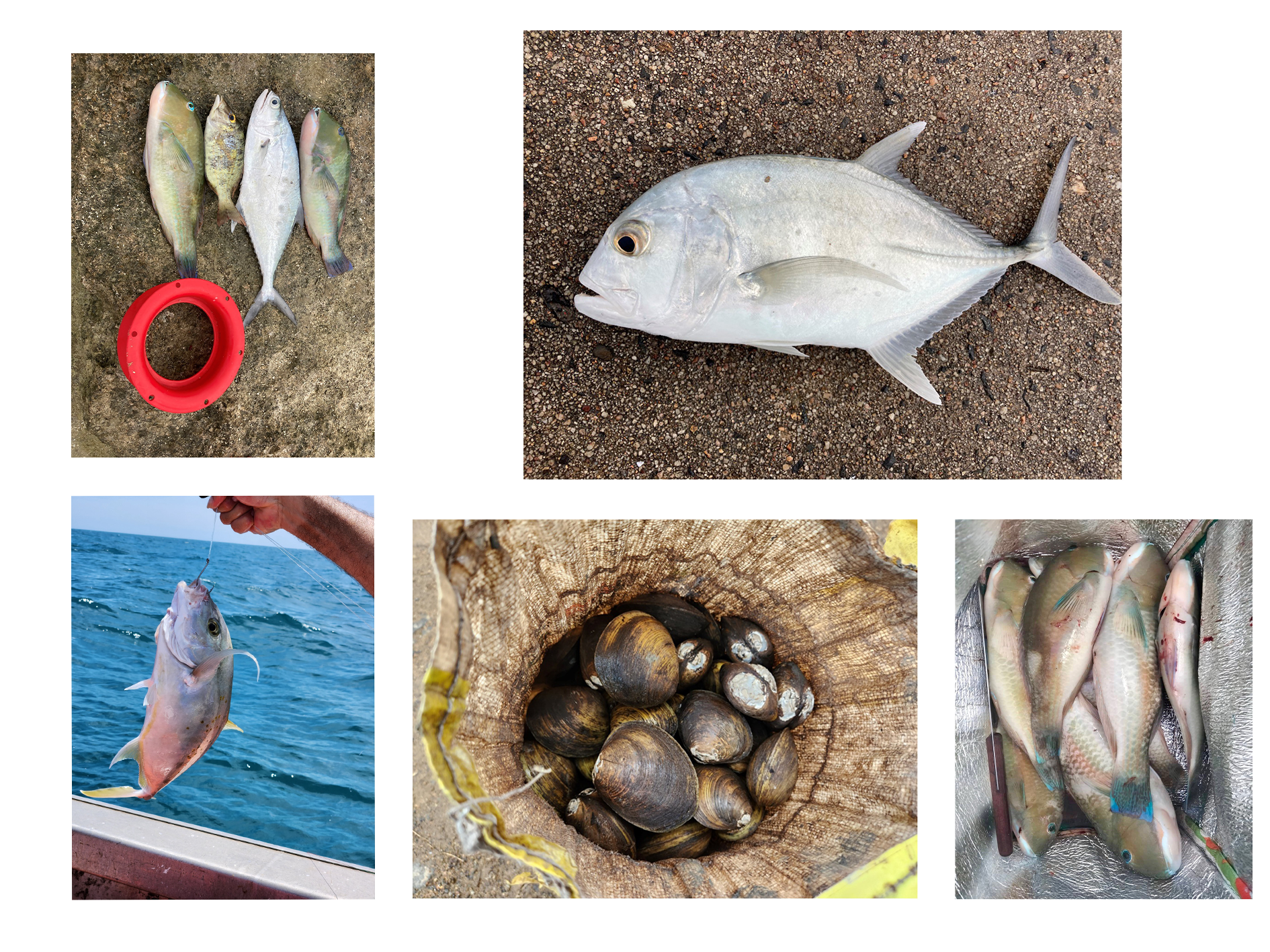Collecting data from traditional fishers comes with unique needs to maintain cultural protocols while providing useful information to help manage fisheries resources.
By Catherine Norwood
The creation of a new, dedicated smartphone app is expected to help record data about the traditional fishing catches in the Torres Strait, supporting community-based management and the sustainability of the region’s fisheries.
This is the recommendation from the second phase of a research project jointly funded by FRDC and the Australian Fisheries Management Authority (AFMA) (2022-045).
Co-leaders of these multi-phased projects are Kenny Bedford, a Torres Strait Traditional Owner and fisher, and Natasha Stacey, a marine social scientist at Charles Darwin University.

In phase one of the project, they found that the Torres Strait community recognised the value of collecting data about traditional fishing to ensure the region’s fisheries were managed sustainably. Digital technologies, such as a smartphone app, were identified as the most cost-effective way of doing this.
The recently completed phase two investigated existing fishing apps and consulted with 15 of the 18 Torres Strait communities between Cape Yorke and Papua New Guinea about app design and features, as well as potential barriers to use of an app.
Data capture directions
Kenny says their research found there was community support to develop a traditional fishing monitoring app for the Torres Strait. It is also recommended increased promotion of the Queensland Government’s Qld Fishing 2.0 app to better monitor recreational catches.

Traditional Owners recognised the importance of tracking their own catch to ensure food security and the sustainability of fish stocks. Their data would add to commercial catch data that AFMA and the Queensland Government collect.
“However, there was an expectation that if traditional fishing is being monitored, then recreational fishing certainly should be as well,” says Kenny.
“With advances in fishing technologies and equipment, both traditional and recreational fishers are venturing further and are capable of landing larger catches,” says Kenny. “We recognise that this is putting greater pressure on our fisheries.”
He says Traditional Owners were clear that they want to keep monitoring of traditional and recreational fishing separate, with an app designed to suit their own needs. Explicit and informed consent from users for data collection would be important. And Traditional Owners wanted their catch data to be held by an Indigenous-led organisation.
Priorities for monitoring include Spanish Mackerel (Scomberomorus commerson), Coral Trout (Plectropomus spp.) and Tropical (Ornate) Rock Lobster (Panulirus ornatus) which are targeted by commercial, traditional and recreational fishers. Community workshops identified more than 90 other species that traditional fishers catch and keep.

Tailored approach
For Natasha, the significant differences between Torres Strait communities, their fishing practices, priorities and concerns highlight the need for a tailored approach to encourage use of an app.
“A communication and behavioural change campaign will be a very important part of any monitoring program, including engagement with local champions,” she says.
While they identified hundreds of fisheries-related apps, they found nothing specifically for traditional fishing.
“It’s really highlighted the gaps in what is available and the need for developing and trialling something that can make use of the incredible digital technologies available, while at the same time maintaining the integrity and cultural protocols for app users.
“Its’s not just about monitoring what people catch, but how that information can be used for more localised community-based management of non-commercial fisheries,” says Natasha.
Implementation of phase three of this project, the development and trial of an app, is still to be determined.
Related projects
2022-045: Measuring non-commercial fishing catches (traditional subsistence fishing) in the Torres Strait in order to improve fisheries management and promote sustainable livelihoods





